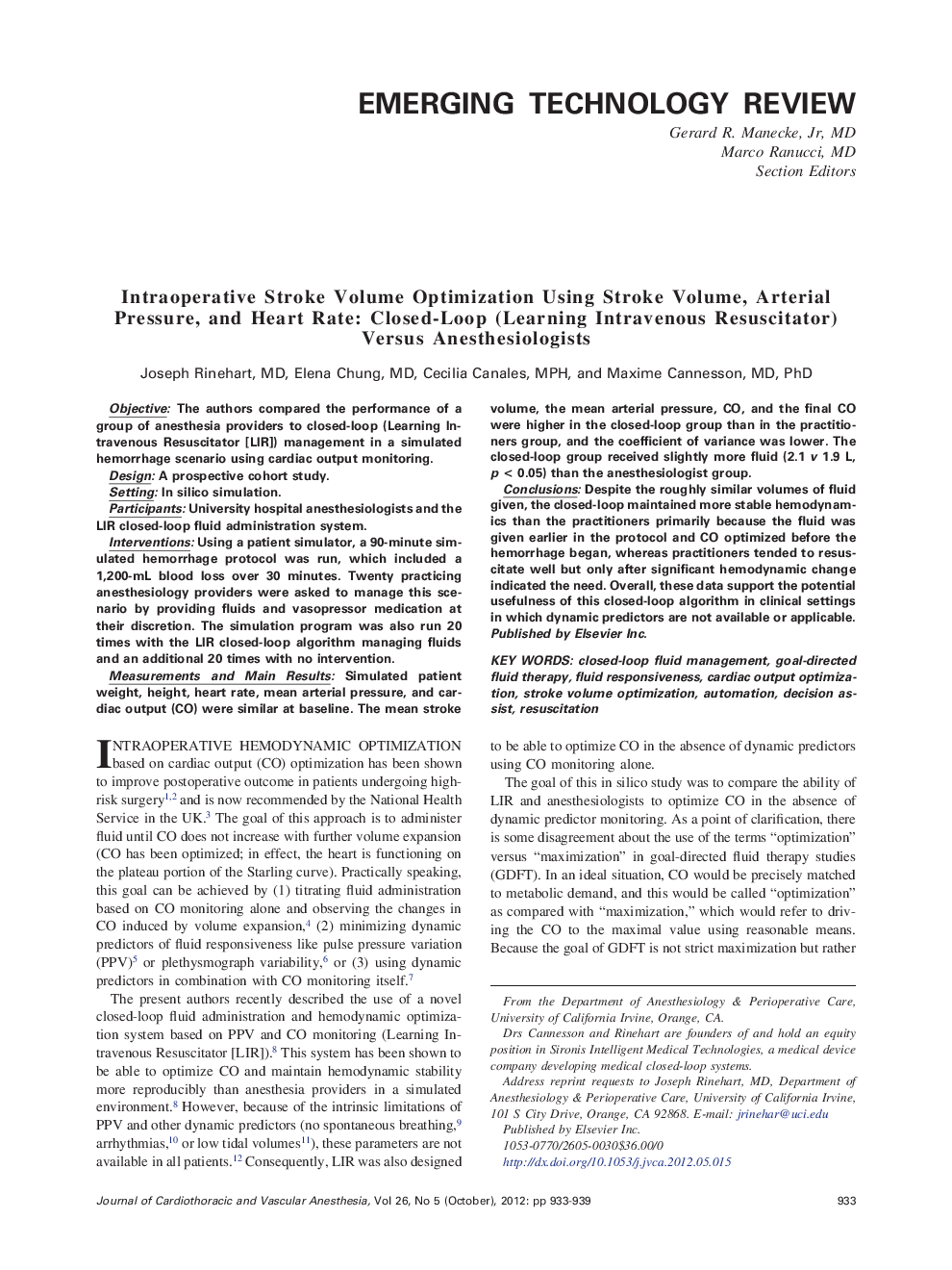| کد مقاله | کد نشریه | سال انتشار | مقاله انگلیسی | نسخه تمام متن |
|---|---|---|---|---|
| 2760360 | 1150171 | 2012 | 7 صفحه PDF | دانلود رایگان |

ObjectiveThe authors compared the performance of a group of anesthesia providers to closed-loop (Learning Intravenous Resuscitator [LIR]) management in a simulated hemorrhage scenario using cardiac output monitoring.DesignA prospective cohort study.SettingIn silico simulation.ParticipantsUniversity hospital anesthesiologists and the LIR closed-loop fluid administration system.InterventionsUsing a patient simulator, a 90-minute simulated hemorrhage protocol was run, which included a 1,200-mL blood loss over 30 minutes. Twenty practicing anesthesiology providers were asked to manage this scenario by providing fluids and vasopressor medication at their discretion. The simulation program was also run 20 times with the LIR closed-loop algorithm managing fluids and an additional 20 times with no intervention.Measurements and Main ResultsSimulated patient weight, height, heart rate, mean arterial pressure, and cardiac output (CO) were similar at baseline. The mean stroke volume, the mean arterial pressure, CO, and the final CO were higher in the closed-loop group than in the practitioners group, and the coefficient of variance was lower. The closed-loop group received slightly more fluid (2.1 v 1.9 L, p < 0.05) than the anesthesiologist group.ConclusionsDespite the roughly similar volumes of fluid given, the closed-loop maintained more stable hemodynamics than the practitioners primarily because the fluid was given earlier in the protocol and CO optimized before the hemorrhage began, whereas practitioners tended to resuscitate well but only after significant hemodynamic change indicated the need. Overall, these data support the potential usefulness of this closed-loop algorithm in clinical settings in which dynamic predictors are not available or applicable.
Journal: Journal of Cardiothoracic and Vascular Anesthesia - Volume 26, Issue 5, October 2012, Pages 933–939